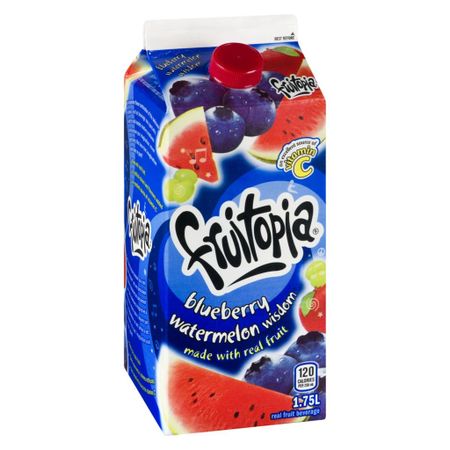Note: This article was originally published on “shiftworknutrition.com” and has been re-posted with the consent of the original author.
When I was a kid, I remember making juice for a party or a special occasion. I’d reach into the freezer to grab the frozen tube and pull the white tab off in a circular motion. After squeezing it into a pitcher, I’d add water and whisk it all up until it was dissolved. That was juice.
Later in life when my dad was going through cancer, I remember watching him stuff all kinds of fruits and vegetables into his juicer. Each morning he would drink the thick blend as part of his health routine.
Juice is an incredibly versatile beverage. Any fruit or vegetable you can imagine can essentially be made into juice. There are many different forms – but are some better than others? Does added sugar really matter, or is the total amount of sugar that counts? Should we look for a calorie-reduced juice? And what about concentrate?
Let’s dive into the different types you can get.

From concentrate. This is the type of juice of my childhood. We would buy juice from the freezer section and reconstitute it with water. The process involves 3 steps typically:
1. Mechanically removing the juice from the fruit and concentrating it down by removing the water content.
2. Pasteurizing it to remove bacteria and storing it in sterile containers.
3. Dehydrating, freezing, or reconstituting with water.
Juices from concentrate often come in 3 versions – reconstituted with water, frozen pulp, or powdered.
– Benefits: longer shelf life, lower transportation and storage costs, and freezing can prevent further nutrient degradation.
– Cons: Pasteurization at high heat can destroy some nutrient quality, may be a loss of taste and freshness, might have added ingredients to improve flavours.
Not from concentrate (NFC).
Because if you have ‘from concentrate’, you should also have ‘not from concentrate’ juice, just to give us one more option.
This juice has also been mechanically processed (they all are) to remove the juice from the fruit. It typically still involves a type of pasteurization, but this juice has not been dehydrated and reconstituted.
– Benefits: Flavour and freshness may be better
– Cons: Still may have some nutrient loss through pasteurization, potentially shorter shelf-life


100% Fruit Juices. This version has no added sugars, but they may have added flavour components and preservatives to help maintain shelf-life.
They can also be from concentrate or NFC. They might be a single fruit juice or a blend of multiple fruits.
This is often the recommended juice to purchase because they do not have added sugars. However, they might have added flavours, preservatives, fortified with nutrients etc. Read the ingredients list to see what’s been added or not!
Juice cocktails or blends. This one can be tricky. It typically just refers to multiple fruits being combined together.
They can be 100% fruit juice or have added sugars and sweeteners. They can be from concentrate or NFC.
If you are choosing this type of juice, read the ingredients list to look for added sugars. Juice really doesn’t need them!
If it doesn’t say 100% fruit juice, there will likely be additional sweeteners like glucose-fructose or HFCS (high fructose corn syrup) in your juice.


Reduced sugar juices. These ones will rarely be 100% fruit juice and will likely always be from concentrate.
A smaller amount of concentrate is added to filtered water, along with other types of sweeteners such as sugar alcohols or acesulfame potassium to keep it tasting sweet.
Not all sweeteners are recommended for all people (ie. pregnant women), so if you want a sugar-reduced beverage, a simple way to do it is buy 100% fruit juice and dilute it with water.
Raw juices.
This juice has not gone through any pasteurization process at all. It will likely always be 100% fruit or vegetable. If consumed fresh, it may have the highest nutrient content if the fruits and vegetables were at their peak ripeness.
It does not necessarily have less sugar than other juices. This juice will have the shortest shelf life and the nutrient content will quickly degrade. It’s often harder to find in grocery stores due to a higher risk of bacteria contamination or growth without any pasteurization process.
The easiest way to get this is to juice your own fruits and vegetables and drink immediately. Until you clean your juicer, and then realize maybe it’s not so easy after all (if you know, you know).

Aside from all that, you can also choose between organic, pulp-free or full-pulp, fortified with other nutrients, low acid and the list goes on! Knowing what’s important to you can help drive your decision.
If cost and shelf-life are your highest priority, look for from concentrate + 100% fruit juice. If the rawest, more “pure” form of juice is your preference, invest in a juicer, juice your fruits and vegetables at peak ripeness and consume immediately. I recommend reading your ingredient list and avoiding those with added sugars (typically any word ending is -ose).
Ultimately, buying ‘from concentrate’ is not bad. Consuming raw juice is not always the best. Every person should make the best decision that applies to them!
So honestly, if standing in the juice aisle triggers a version of ‘99 bottles of juice on the wall’ to start playing in your head, you’re not alone. The more options there are, the more confused we get as consumers! New technologies are emerging to preserve taste and nutrients while still deriving the benefits from concentrate, so food science is evolving all the time!
There isn’t always one perfect answer, because nutrition is not a perfect science. Reach out to a registered dietitian if you need specific help with your diet!
The Juice Council thanks “shiftworknutrition.com” for their contribution and invite you to read more by visiting “shiftworknutrition.com“
